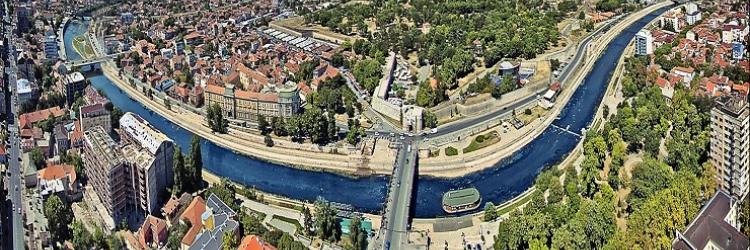Other Comments: 0 Jun 13, 2017
Serbia's third-largest metropolis, founded even in pre-Roman times, is a city of contrasts, where along new and posh cars Roma trot in their horse-drawn carriages, a city buzzing with fancy cocktail pubs, bars and pubs, live music scene and numerous fairs during summer. Niš was very important back in its daz, and its fame reached its peak during the years of the Empire. It is also the birth place of numerous emperors, such as Constantine the Great (AD 280–337), Constantius III and Justin I. During the Turkish rule, which lasted from 1386 until 1877, Serb revolts left traces in its history as well as its cityscape, which serve as the reminder of Turkish oppression, as well as WWII, when Nazis built one of Serbia's most notorious concentration camps here.
Medijana represents the remnants of Constantine the Great's luxurious 4th-century Roman palace. While the palace is an interesting sight to behold by itself, its recently discovered mosaics that span over 1000m2 are the highlight of the tour. The excavation process that was finished in 2016 unveiled, in addition to the admirable mosaics, a palace, a forum, a church and an expansive grain-storage area.
Niš Fortress: This fortification system, whose first mentioning dates back from the Roman period, additional built by Turks in 18th century, today stands for a booming recreational area with restaurants, cafes, market stalls and ample space for moseying. Within the fortress walls resides the 16th-century Bali-beg Mosque, which now houses an art gallery. The fortress also hosts the Nišville International Jazz Festival each August and Nišomnia, featuring rock and electro acts, in September. The city's main pedestrian boulevard, Obrenovićeva street, stretches before the citadel.
Ćele Kula or the Tower of Skulls is a symbol of endeavor that Serbs went through under the Turkish rule, when during the 1809 Battle of Čegar, the Duke of Resava rebelled against and stroke the Turkish defenses, where he got himself and his 4000 men killed, after which Turks embedded 952 skulls of the dead Serbs in this tower, of which only 58 remain today.
Red Cross Concentration Camp: Nothing less famous than Auschwitz, this camp one of the best-preserved Nazi camps in Europe. The camp was established during the WWII (1941–45), when under the German occupation about 30,000 Serbs, Roma, Jews and Partisan were held in this camp deceptively called Red Cross. Today the camp’s displays tell the stories of the biggest ever breakout from a concentration camp, with detailed English translation on the spot.
These are just the most famous sightseeing attractions in Niš, but there are numerous interesting bits around that can catch your eye, so plan at least a couple of days in order to give everything equal attention, and after a long sightseeing tour, visit Niška spa, a perfect place to unwind and recover.


 RS
RS  ME
ME  HR
HR  BA
BA  RU
RU  MK
MK  AL
AL  ES
ES  DE
DE  IT
IT  CN
CN  NL
NL  SE
SE  FR
FR 






Write a comment